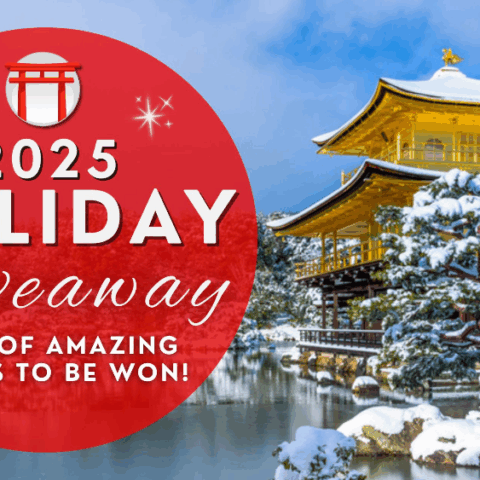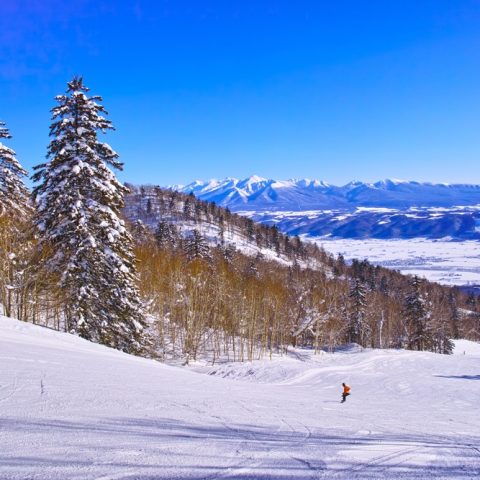
Imagine it’s 1300 years ago in the year 724 AD, the Nara era of Japan. You’ve heard whispers of Kinosaki, a small town nestled along the Sea of Japan. Word has it a Buddhist priest named Dochi Shonin prayed for one-thousand days in order to help the locals in their suffering. On the thousandth day, it’s rumored that healing waters sprouted from the ground and became the town’s first natural hot spring, Mandara-yu. You make the pilgrimage, hoping what you’ve heard is true.
Upon arriving, you stroll through lantern-lit streets, permeated by the steam of the local onsen, the natural hot springs. A symphony of pattering geta, traditional woodblock sandals, fill the air, clacking upon stone. For dinner, dressed in nothing but a yukata, a form of traditional Japanese casual wear, you sit beside other travelers at a local shop to slurp down hand-cut soba noodles.
After taking the “Onsen Meguri” by visiting each of the 7 Mystic Onsen for which the town is renowned — meguri being Japanese for pilgrimage — you leave Kinosaki revived, calm, and feeling better than you ever have in your life. Visiting Kinosaki today, you’ll still benefit from a very similar experience.

Entrance to one of the 7 Mystic Onsen-Credit: Visit Kinosaki tourism website
Enhance Your Visit By Staying At A Ryokan
By train, this legendary onsen town lies about three hours north of Osaka, and two and a half from Kyoto. Locals and tourists come to Kinosaki to soak their bones in the seven open-air onsens that make up this pristine and peaceful getaway, just as they did in Dochi Shonin’s day. Just hop on the limited express train from Kyoto or Osaka to arrive at Kinosaki Onsen station, just a quick jaunt from the heart of town.
To really feel as if you are in the Nara era, stay at one of the many traditional inns, called ryokan. When you do, you’ll receive your set of geta, yukata, and kimono, plus a basket to carry your belongings. Each ryokan comes with a pass that allows visitors to come and go at their own convenience between any of the seven tattoo-friendly onsens.
There are around 3,000 onsen establishments scattered across Japan, but only about 30 percent allow tattoos. If you’re inked up yet yearning for an unforgettable experience, look no further than Kinosaki, where you can roam freely without the stress of having to cover up.
If you don’t know how to use Onsen please read our guide here.
Begin Your “Onsen Meguri”
Kinosaki rises early. At dawn, mist unfurls from the surrounding green mountains, shrouding the town in a gentle mystique. At 7 am, when the first onsen opens its doors, you’ll find visitors taking part in sozoro aruki, a Japanese term that means to walk leisurely and with no apparent aim. So where should you start your onsen adventure first?
Before you kick your feet up in the healing waters, consider making the ascent and paying your respects at Onsenji Temple, the guardian temple of Kinosaki. Climb the stone pathway or take the gondola about halfway up Mt. Daishi to the main hall, where you may pray to the onsen guardian for a blessing to be healed by the natural springs.
Now, it’s time to soak — you’ve deserved it. Each of the 7 Mystic Onsen — Mandara-yu, Ko no yu, Gosho no yu, Jizo yu, Sato no yu, Ichi no yu, and Yanagiyu—has its own history, features and charm. Some baths are indoors, where built-up steam adds a deeper layer of cleansing. Others remain outdoors, so visitors can lie on rocks and breathe deeply from the fresh air while enjoying the sound of waterfalls and rustling leaves. Try them all with the pass from your Ryokan and decide which is your favorite.
Do As The Locals Do
Japan is a country of tradition and respect. So, whilst on your travels, do as the locals do; stay true to form. When you enter any of Kinosaki’s onsen, you’ll take off your shoes and stow them in one of the free lockers. Scan your pass and head into your gender’s locker room to de-robe and enter the shower room. Take a low squat on one of the tiny stools and rinse yourself off before heading into the spa. All there is to do now is kick back and relax.
Throughout the day, sunlight falls within the narrow alleyways and warms the road as the sun takes the sky. The canals running through town glisten, as do the smiles on each passing face.

Couple strolling in Yukata Credit: Rei Imagine
Cherish This Extraordinary Experience
Kinosaki feels like one big spa, as visitors can enter any store, restaurant, bar or establishment in nothing but their geta and yukata, adding on a kimono in the colder months. This is, perhaps, the best part about Kinosaki. When you pass others in the same traditional wear, it feels like you’ve traveled back in time and are experiencing something truly extraordinary together. And that’s because you are.
For lunch, slip into Masuya, a lovely little soba shop along the main road. Close your eyes and listen to the tantalizing pops and sizzles of the kitchen, the slurping of noodles, and the low, amiable chatter of happy guests. Then chow down on the greatest chilled duck soba of your life.
At dusk, the town takes on an ethereal glow. Orange lanterns come alive, swaying over the canals and bridges. The moon shimmers overhead, its light dancing on the water’s surface.
In the evening, it’s time to join other visitors sipping tea, beers, and sake—Japanese rice wine—at one of the local watering holes or izakayas, Japanese pubs. Creating what are the best ways to round out the perfect day in Kinosaki, an experience that’s hardly changed in over a thousand years.
Spring, summer, autumn, or winter—each season maintains its own distinct allure, so you can’t pick a bad time to visit. If you’re looking for a truly unique and traditional Japanese experience to decompress after the taxing Tokyo, Osaka, or Kyoto route, then look no further than Kinosaki Onsen. Being not only tattoo-friendly, but steeped in history, this is the perfect place for anyone who is looking to relax in true Japanese style. This traditional town that is sure to take you back thousands of years is a hidden gem that should not be missed.
Coming to visit Kinosaki Onsen? It’s a quick day trip to Kansai, so be sure to check out our food tours with a local expert in Kyoto and Osaka!







